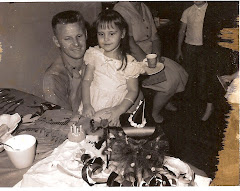Tracking down African-American, Native American or racially mixed ancestors can be difficult, especially when these family members often were oppressed and segregated in society. The segregation did not end with churches, schools and neighborhoods. Even the final resting places of these ancestors were separate and sometimes obscure.
A few years ago, my father and I decided to go on a field trip to visit the places where my ancestors lived. We had accumulated information from census records and vital statistics and thought I understood quite a bit about our family and how they lived. When we actually visited the township they lived in, I was in for a surprise.
I knew my great-great grandfather was buried in Grant Township, also called Grantville, in Randolph County, North Carolina. When my father and I finally located the grave of my ancestor, it raised hundreds of more questions. He was buried in a small, grassy area near the side of the road. Up on the hill, directly above his final resting place, was a beautiful church dating back to the early 1800’s with a magnificent cemetery. The cemetery contained thousands of graves, but why wasn’t my ancestor buried among them?
Then a local woman told us, “He was too dark to be buried up there.” Since our ancestor, Abraham Wellington “Bud” Goins, died in 1884, there were no vital records that indicated that he was a person of color. The race category on the census records was recorded upon the discretion of the enumerator who would look at the person and check the category he thought the individual should be labeled as. One enumerator may believe he is taking information from a mulatto. Another enumerator may label him as an Anglo-white. The information varied, but when it came down to the final resting place, the people in the community knew that Abraham Wellington Goins was not white.
Family members tended to the grave and Goins’ daughter, Norvie Jane, placed a traditional headstone on the grave to mark it. The prominence of the marker bespoke of the homage reserved for a beloved patriarch of the family. Surrounding the marker, there were at least four other small, unmarked markers. Judging from the small size, they may indicate the final resting place of children or perhaps female members of the family. No one will know for sure.
Another clue in finding mixed ethnic relations may be in the footstones. Again, when looking for my family members, I could not locate them in neat churchyards. The field trip involved excursions deep into woods. On one occasion, I photographed a footstone of a family member who had a traditional marker with her name and dates, but the footstone possessed an interesting etching of a human body being supported by vertical lines. Not understanding this, we showed the photograph to a gravedigger in the area who proved to be most helpful. “That picture indicates that she was buried upright,” he said. It was a common practice of the Native American peoples in the area to bury their deceased standing up.
Sunday, October 01, 2006
Subscribe to:
Posts (Atom)




